

|
|
|


|
|
1/10 Scale Electric Buggy:
Kyosho Javelin 2017 - 30618
|
Introduced by Kyosho in 2017, the 4WD Javelin buggy kit - # 30618, was an updated version of the original 1986 Javelin (# 3031).
The new Javelin is essentially the same chassis as the new Optima that had been introduced in 2016, based on an alloy ladder-frame, double deck chassis, that offers a choice of chain or belt drive, with gear type differentials, dogbone drive-shafts, big bore coil spring over oil filled dampers, a plastic roll-cage and ball bearings.
The open roll-cage design retains the styling of the original, but gives little or no protection from dust and grit entering the chassis. Final thoughts ... looks nice on the display shelf, but not really suitable for modern day racing.
Check out our Kyosho Archive for other Vintage Buggy models.
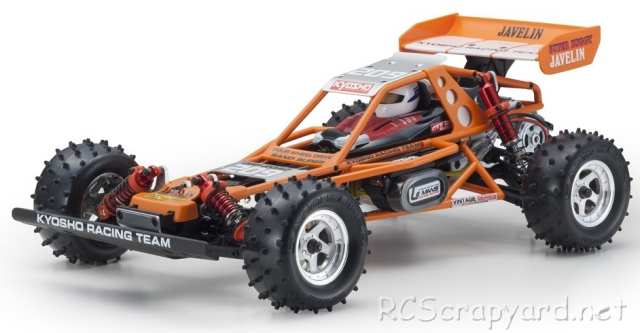
To get the best from the Kyosho Javelin 2017, it needs to be fine tuned, to provide precise steering response and improve grip when cornering, so you don't slide off the track. Small changes can make huge advancements and our easy to understand guide will help you to the optimum Set-up for your individual driving style.








|
|
|

★ Kyosho Javelin 2017 Chassis ★ 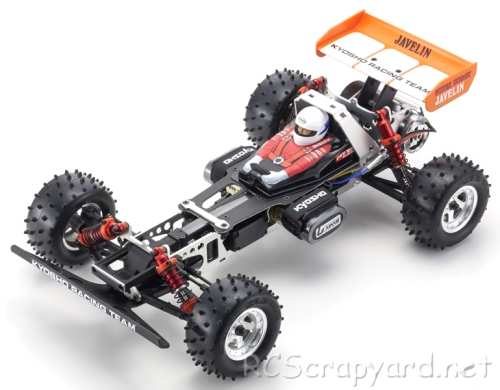
★ Kyosho Javelin 2017 Chassis ★ 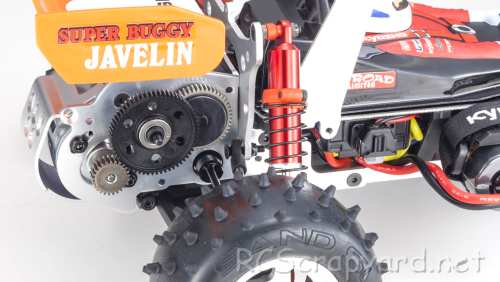
★ Kyosho Javelin 2017 Chassis ★ 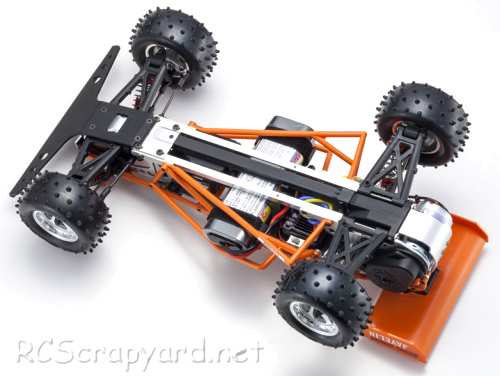
★ Kyosho Javelin 2017 Chassis ★ 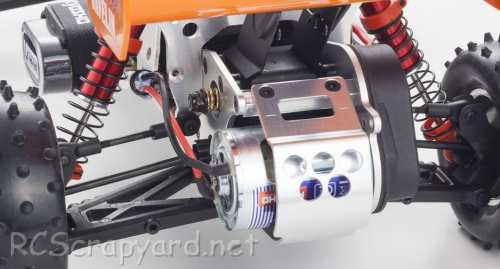
|
Buying a Used Kyosho Javelin 2017
|
|
Manufacturers and Brands Catalogued, Listed and Reviewed by RC-Scrapyard.
At present, the RC Model Manufacturers, Brands and Distributors covered by us are: ABC Hobby, Academy, Acme Racing, Agama Racing, Amewi, Ansmann Racing, ARRMA, Team Associated, Atomic RC, Axial, AYK, Bolink, BSD Racing, Capricorn, Carisma, Carson, Caster Racing, Cen, Corally, Custom Works, Durango, Duratrax, ECX - Electrix, Exceed RC, FG Modellsport, FS-Racing, FTX, Fujimi, Gmade, GS-Racing, Harm, HBX, Helion, Heng Long, Himoto Racing, Hirobo, Hitari, Hobao, Hong-Nor, Hot Bodies, HPI, HSP, Intech, Integy, Jamara, JQ Products, Kawada, Kyosho, Losi, LRP, Maisto, Mardave, Marui, Maverick, MCD Racing, Megatech, Mugen, New Bright, Nichimo, Nikko, Nkok, Ofna, Pro-Pulse, Protech, PTI, RC4WD, Redcat Racing, RJ-Speed, Robitronic, Schumacher, Seben, Serpent, Smartech, Sportwerks, Step-Up, Tamiya, Team-C Racing, Team Magic, Thunder Tiger, Tomy, Top Racing, Traxxas, Trinity, Tyco, Vaterra RC, Venom, VRX Racing, WLToys, X-Factory, Xmods, Xpress, Xray, XTM, Yankee RC, Yokomo, ZD Racing and Zipzaps. |
|
Hints, Tips and Information
Rubber Tires for RC Models
Rubber Tires ALWAYS should have either soft sponge or rubber inserts. They will not function as they should without them. And if you are totally serious about your racing they should be glued to the rims. How to Mount Rubber Tires onto Wheels/Rims.
Before mounting your Tires, I would recommend talking to the more experienced racers at your local club, concerning what inserts they use. Even the top level racers rely on a bit of local knowledge on tracks they have never raced before. |
Information and AdviceElectronic Speed ControllersHistory
ESC were originally developed to be used in conjunction with brushed 27T stock and modified motors in the late 1970s, early 1980s. Compared to modern day Controllers, they were Bulky and heavy, constructed using basic resistors, rheostats, capacitors and transistors, crammed together on a simple circuit board, to provide stepped but smooth acceleration when compared to the old mechanical, servo operated sweeper Speed Controllers. An Electronic Switch to change the direction of current flow was used on some of these early ESC to give reverse operation. Although they were a vast improvement on the old mechanical speedos of the time, they were expensive, jerky to control, and prone to burn out if not carefully looked after. |
|
RC Models:
|
Radio & Motors: |
Other
Accessories: |